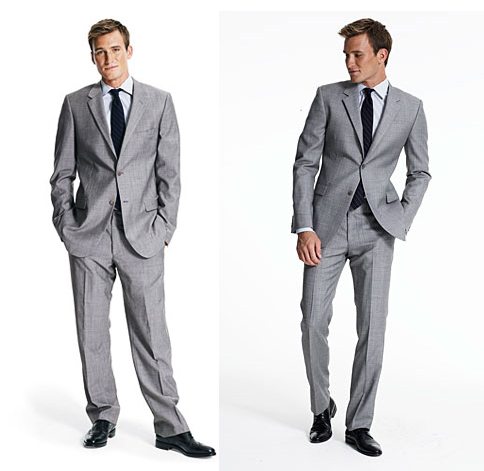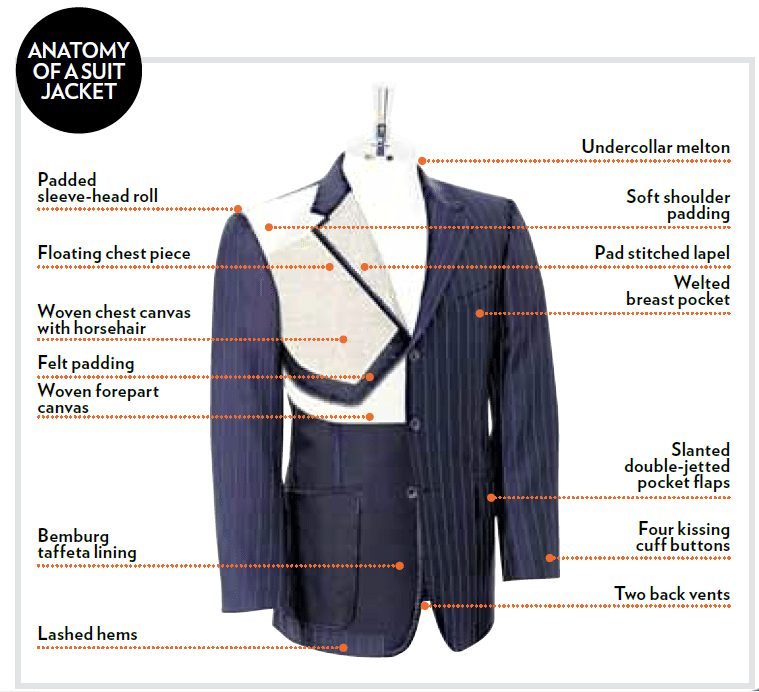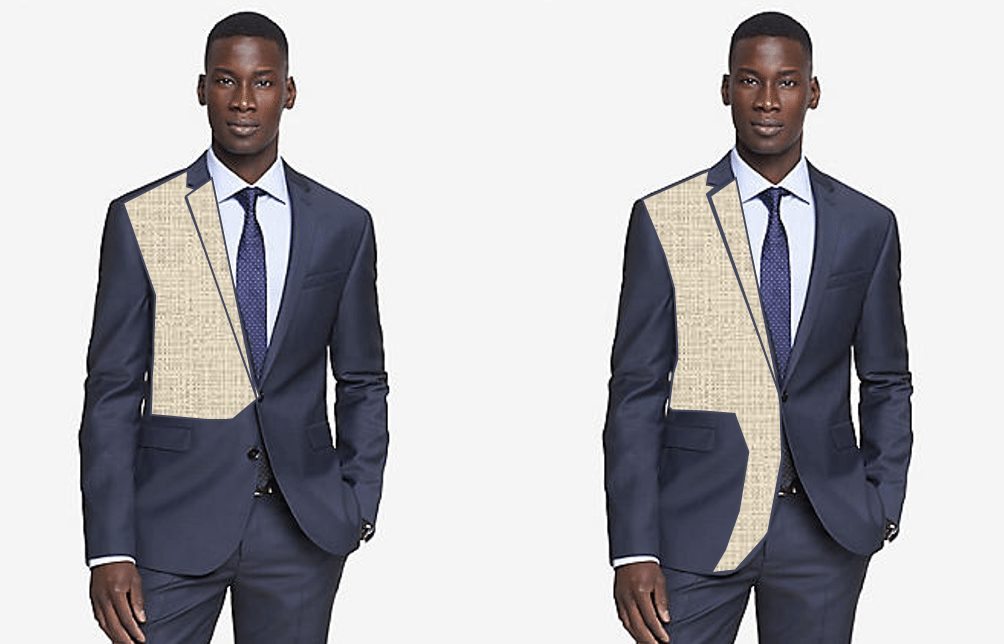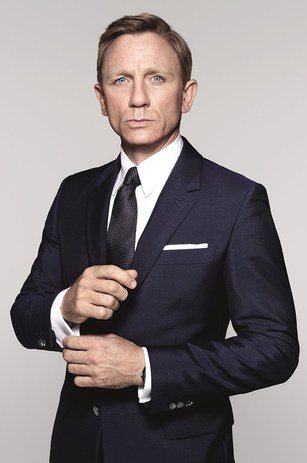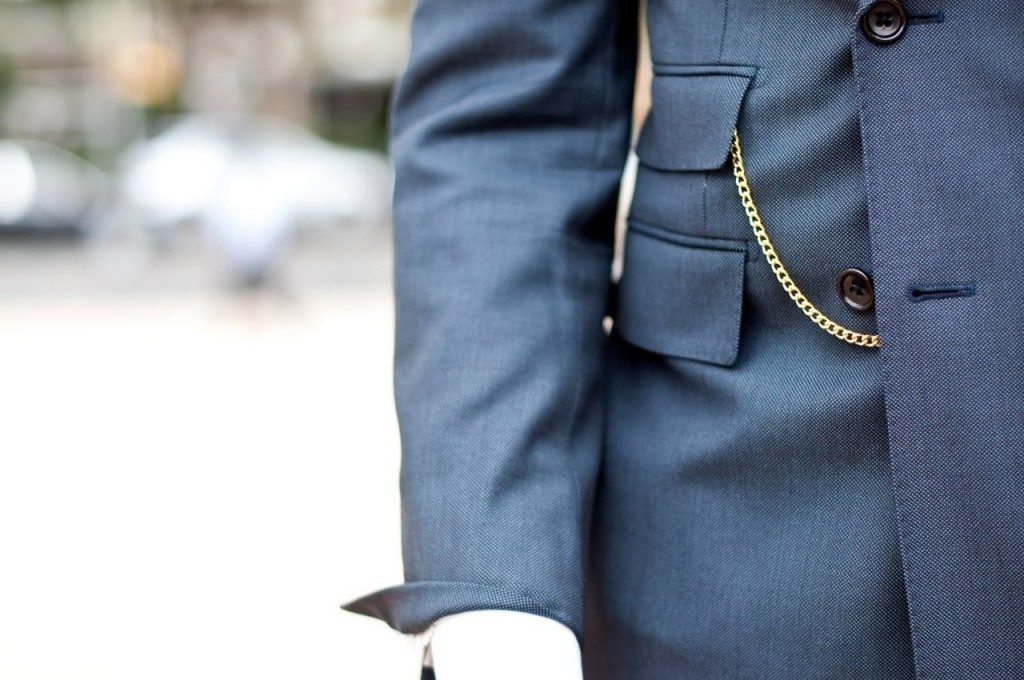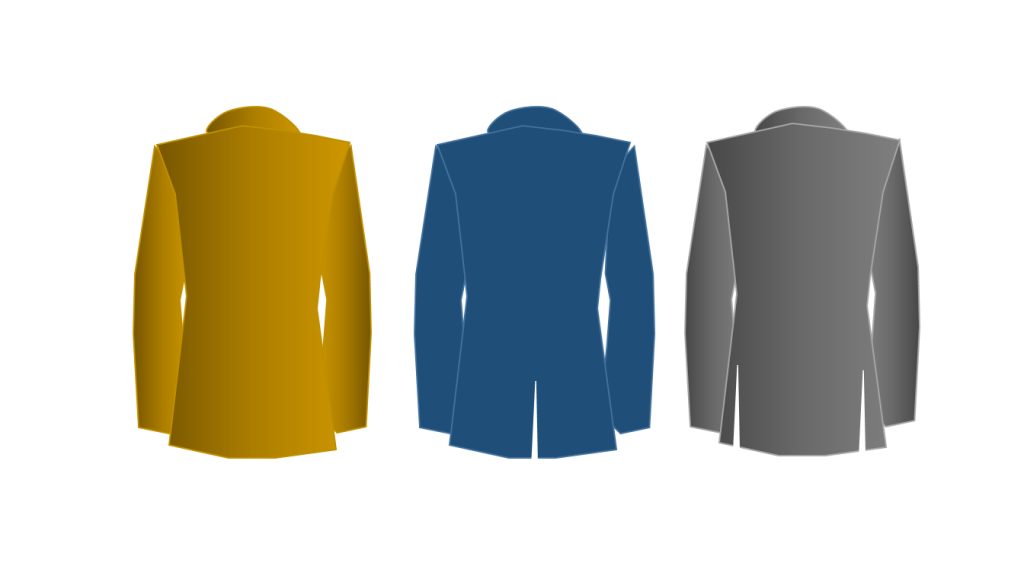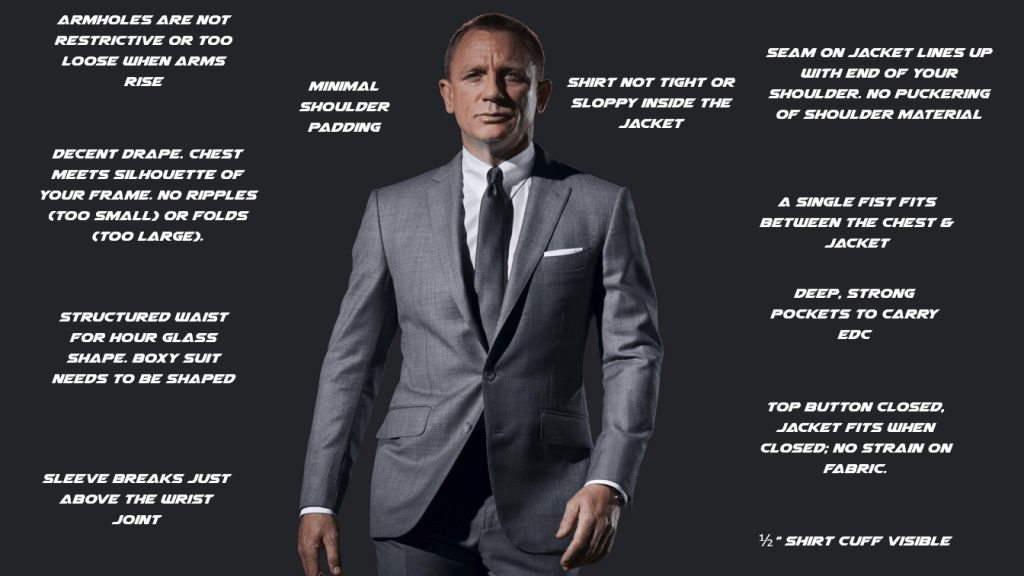Funny. I was wondering how to start this particular article and I found my “way in” the minute I went to purchase a bottle of water. Lo and behold–,two protective agents at the stop-n-shop, looking like they were each wearing sacks filled with hammers; I kid you not. One of the agents was wearing a lumpy, oversized suit more akin to a Zoot suit than what I would ever call professional menswear. His partner was fishing for a wallet so far down into the rear pocket of his baggy trousers that for a minute I lost sight of his elbow. Why is this important? I’ll explain.
I’m certain they could fire their pistols well, if they ever needed to, but at what degree of disadvantage did they put themselves at by dressing so shabbily? You do not need to spend $1500.00 dollars on a Hugo Boss suit to look good. Dressing well means finding the right fit for your shape and size. One of the best dressed men I know shops at JC Penny. One day I asked him, and he told me! For years I thought he purchased his suave wear at a proper clothier. He knows how to put it all together!
Select what puts you at an advantage to your potential foe. The model in the image below is wearing a baggy suit. Sleeves and pant legs that are too long are difficult to run in. A baggy jacket looks sloppy but also won’t allow you to move fluidly. The image of the model on the right side of the picture looks ready for action in a slim fitting but well-tailored suit. A pleat or two, along with pant with room in the crotch/seat or a gusset can allow you to kick or run without tearing open your backside.
Learning to dress well takes some time and know-how. This isn’t a slur against the good guys; most of us have never been shown this side of things, so let’s get started.
First, looking good in a suit is important. Doing so conveys to your client that you are a professional; not only in your appearance but as someone who is well-skilled. Yes it is true; those with good cash flow are able to purchase expensive clothing however a person that spends a lot of money on clothing doesn’t always mean they look good in it. There are some lessons to be learned from others who’ve spent good money on bad styling and ill-fitting clothing.
If you can learn to identify quality clothing, your tailor will only need to make minor alterations so your suit fits nicely. There are some very good websites out there providing killer info on men’s wear. I will not elaborate on style unnecessarily. Anything I present here is so an individual can be more tactically “sound”. What do the conjoined words “tactically sound” even mean?
After purchasing your suit did you ever wear it to the gun range and practice shooting your pistol or rifle? Were the arm sleeves so restrictive that you couldn’t do so with ease? Were you able to keep a gun in the jacket without printing? Printing” is the informal term referring to the outline of a concealed carry gun on a garment the person is wearing.
Here are some key features to look for:
Jacket
Interlaced or Canvas
Before most suits were mass-manufactured, in days when quality was better controlled, a man’s suit was constructed with a layer of canvas underneath the fabric shell. The canvas lining helped hold the shape of the suit by keeping it from deforming. A tailor would create the shape of the jacket, based on a person’s individual shape, and then the tailor cut the canvas pattern to sit inside the jacket. By using excellent materials such as silk, linen or wool and skilled tailoring, over time the jacket conformed naturally to the wearer’s body’s shape.
The inside of your jacket will either have a quality inner material or not. An inner quality lining allows the material to follow the shape of your body while a low quality lining will not. Today in order to save money many suit manufacturers use a production technique called interfacing otherwise known as “fusing”. The shell of the suit utilizes the fusible interlining, instead of canvas, in order to help the jacket keep its structure. Most jackets using this cost-effective method look stiff and unnatural. Hemlines, pocket openings and even the ends of cuffs are now made by using interfacing to strengthen those areas.
Excellent info found online about a suit jacket
A few problems develop when using a fusing process. Drycleaning a suit will cause the glue to degrade over time or the material becomes unstuck. After multiple dry cleanings inner linings have a tendency to bubble or ripple up beneath the outer fabric around the chest area. Once this occurs there is no way to fix the problem. Fusing technology has improved quite a bit but keep in mind your money can be best spent on buying something non-fused. Here’s a handy trick: When you look for a suit pinch the sleeve of the jacket and get a feel of the material’s thickness. Then, feel the back of the jacket, the front, and pull those layers apart. If you feel an inner layer, then the jacket is canvassed, and if it is not then you more than likely have a fused jacket. More cheaply made linings are made from synthetic materials and feel slippery to the touch. One of the primary reasons for purchasing a canvassed jacket is simply because it naturally falls on a person’s shape while a fused jacket can look stiff. A well fitted jacket prevents you from “printing”. “Printing” is the informal term referring to the outline of a concealed carry gun on a garment the person is wearing.
We established that using natural materials in creating a jacket will allow it to drape over the shape of your body. Natural materials also add to the lifespan of the jacket. Let’s reexamine how manufacturers create jackets using the full canvas or half-canvas method. A full canvassed jacket will cost more than a half-canvassed jacket.
A fused jacket will not use the stitching technique that a canvassed jacket does. Look carefully on the reverse side of a jacket’s lapel. Do you see tiny stitches holding the layers of fabric together? A fused jacket will have not have this kind of stitching.
Materials
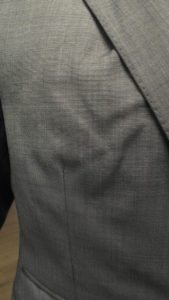
The cost of the attendant’s service to you is rolled into the price you pay for the clothing. My personal feeling is to pursue places such as Nordstrom’s Rack or Burlington Coat Factory first to find better quality shirts and suits on discount.
What you are paying for at Jos A. Banks is good service. An attendant shows you how to mix and match patterns, and how to find the best fitting suit, but for a price. It’s best to learn what works for you and shop elsewhere.
Now let’s discuss materials. Natural materials are more durable and will breath more effectively than synthetics which means they are more comfortable for the wearer. If you are standing outside while your client is giving a speech on a hot day a suit made of natural materials will not cause you to sweat or feel uncomfortably hot as much as synthetic materials. Synthetics also have a tendency to be shiny, and are less durable.
Thread Count
What climate are you wearing your suit in? Are you in Florida or North Dakota? Is it humid? Is it cold in your region? You want to feel comfortable so you can focus on your mission, instead of feeling light-headed and dehydrated from wearing a heavy wool suit. A higher thread count produces a lighter, softer and more comfortable suit and is best suited for wearing in warmer temperatures. Lighter, softer materials don’t always last as long as heavier, rougher materials. Look for thread counts in the 120 to 130 range. A lower thread count in the 100 to 110 range is good for added thickness and is best suited for wearing in colder temperatures.
Do not purchase clothing with a higher thread count because the attendant told you so. Before I ever learned a thing about tailoring, or before my brother learned how to tailor his own clothing, I made the mistake of spending lots of money after taking advice from a ill-informed haberdasher too eager to sell. He advised me to wear 4 pleated, cuffed-trousers and oversized jackets on my lean frame. You ever see a walking sack of potatoes? Lesson learned.
Pockets
In today’s world of gadgets it’s best to have useable jacket pockets. Many jackets come with the pockets sewn shut. Pockets are added onto a suit generally as a measure of the suit’s quality rather than for purposes of utility. I recommend, if you can, to purchase jackets with an inner-ticket pocket (useful for business cards) and a useable breast pocket (useful for the handkerchief or pocket square). These might come in handy if you cut your hand open, or for collecting business cards. Keep the Every Day Carry (EDC) out of your trouser pockets. A good tailor can create specialty pockets sized to hold a variety of useful items.
Jacket Vents
Jacket vents are the flap-like slits in the bottom of the jacket to provide better movement. There are commonly 3 choices for vents: no vent (Brown), single vent (Blue) and double vents (Gray). Vents allow movement and access to the trouser pockets. Try on your jacket and see if you can access your holster while the jacket is buttoned and unbuttoned. Can you do this easily? Men’s suit jacket vents also facilitate sitting more easily. A jacket with no vents is designed for men who like a close fit. Whatever you choose, ensure you can move in it fluidly. Stay away from suits with excess material that can get caught up on doors, fences, etc. Stay away from restrictive jackets or those that can expose your holster. The backside of your jacket should adequately cover your trousers. Try sitting in your vehicle and withdrawing your weapon from your jacket. Is your jacket so long that you are sitting on it? Are you restricted in any way? Something to think about.
Shoulders
It is very important to find a jacket that fits at the shoulders. Do not purchase a jacket that is too tight on your shoulders. Tight shoulders and armholes can prevent you from moving fluidly.
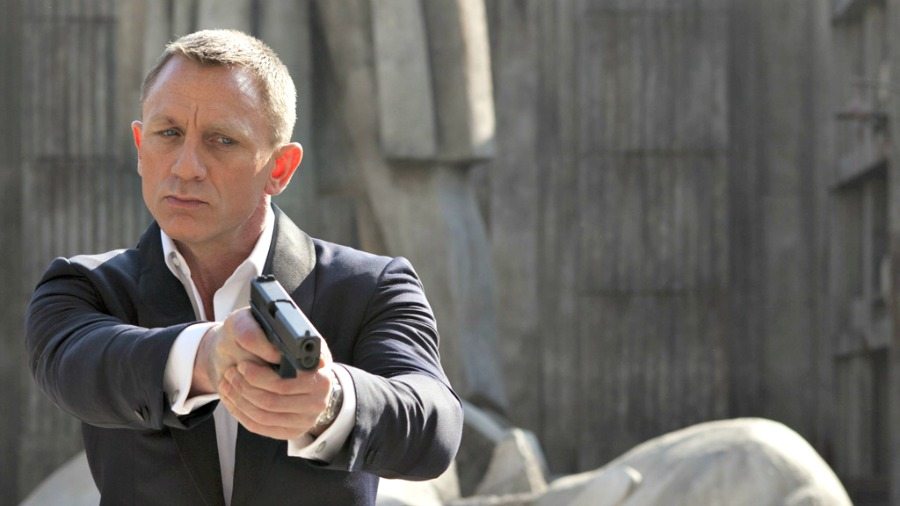
Armhole
The size and placement of armholes can vary on jacket. Two jackets of the same size but in a different style may not fit the same person. Body hugging jackets may look good, for example on a person with an athletic build, but it may be overly restrictive for wrestling or manipulating a weapon. Look for jackets with about an inch of extra material below your armpit. Couple the jacket with a well fitted shirt so the extra shirt material doesn’t bunch beneath your jacket.
A Jos A. bank suit retails for $199.00 and up. A Brooks Brother’s suit can be had for about $359.00. A Macy’s suit for about $550.00. Nordstrom for around $800.00. A Hugo Boss for about $1200-$1500.00. I recommend deciding on what you can afford and add about $100.00 for minor alterations such as hemming the trousers and taking the jacket in, or letting it out to fit your frame and shape.
I’ve only covered the basics here. We haven’t even scratched the surface. Again, there are many great websites on bespoke tailoring, style, and that offer great prices. All I want to impart to you is in finding something that let’s you look cool, move fluidly, and feel good so you can focus on your mission. Simple.
*The views and opinions expressed on this website are solely those of the original authors and contributors. These views and opinions do not necessarily represent those of Spotter Up Magazine, the administrative staff, and/or any/all contributors to this site.


